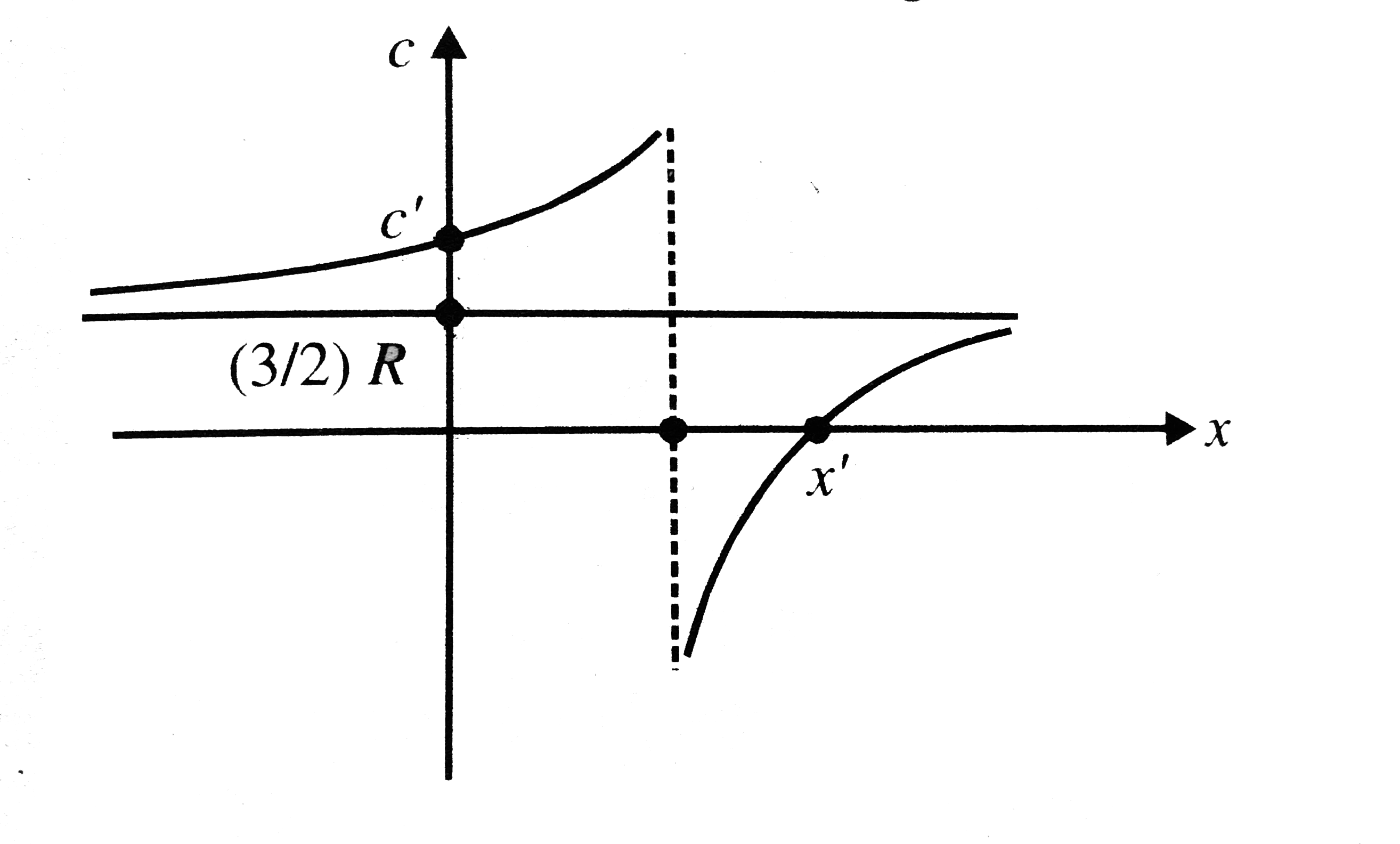A diatomic ideal gas is expanded according to PV3 = constant, under very high temperature (Assume vibration mode active). Calculate the molar heat capacity of gas (in cal / mol K) in this process.
The correct Answer is:6
To calculate the molar heat capacity of a diatomic ideal gas that is expanded according to the relation PV3=constant, we can follow these steps:
Step 1: Identify the parameters of the gas
Given that the gas is diatomic and at very high temperatures, we need to consider the degrees of freedom. For a diatomic gas, the degrees of freedom include translational, rotational, and vibrational modes.
At high temperatures, the vibrational modes become active, which means we need to account for them in our calculations.
Step 2: Determine the molar heat capacity at constant volume (CV)
For a diatomic gas, the molar heat capacity at constant volume (CV) can be calculated as follows:
CV=52R+Rvib
Where:
- R is the universal gas constant.
- Rvib is the contribution from the vibrational modes.
At high temperatures, each vibrational mode contributes R to the heat capacity. A diatomic molecule has one vibrational mode, so:
Rvib=R
Thus, we have:
CV=52R+R=72R
Step 3: Calculate the molar heat capacity in the process
The given process follows the relation PV3=constant. In this case, we can use the relation for molar heat capacity in a polytropic process:
C=CV+R(1−1n)
Where n is the polytropic index. From the relation PV3=constant, we can identify n=3.
Substituting CV and n:
C=72R+R(1−13)
Calculating R(1−13):
R(1−13)=R(23)=23R
Now substituting back into the equation for C:
C=72R+23R
Step 4: Finding a common denominator and simplifying
To add these fractions, we need a common denominator. The least common multiple of 2 and 3 is 6:
C=216R+46R=256R
Step 5: Convert to calories per mole per Kelvin
Using R=2 cal/(mol K) (the value of the gas constant in calories):
C=256×2=506 cal/(mol K)≈8.33 cal/(mol K)
Final Answer
The molar heat capacity of the gas in this process is approximately 8.33 cal/(mol K).
---
Given that the gas is diatomic and at very high temperatures, we need to consider the degrees of freedom. For a diatomic gas, the degrees of freedom include translational, rotational, and vibrational modes.
For a diatomic gas, the molar heat capacity at constant volume (CV) can be calculated as follows:
- R is the universal gas constant.
- Rvib is the contribution from the vibrational modes.
The given process follows the relation PV3=constant. In this case, we can use the relation for molar heat capacity in a polytropic process:
To add these fractions, we need a common denominator. The least common multiple of 2 and 3 is 6:
Using R=2 cal/(mol K) (the value of the gas constant in calories):
The molar heat capacity of the gas in this process is approximately 8.33 cal/(mol K).
Topper's Solved these Questions
Similar Questions
An ideal gas expands according to the law PV3/2=constant We conclude that
View SolutionFind the value of molar heat capacity for an ideal gas in an adiabatic process.
View SolutionOne mole of argon is expanded according to process equation PV1.5=constant and its temperature falls by 26 K, then
View SolutionAn ideal gas expands in such a way that PV2=constant throughout the process.
View SolutionA diatomic ideal gas is expanded at constant pressure. If work done by the system is 10 J then calculated heat absorbed.
View SolutionA diatomic ideal gas is heated at constant volume until the pressure is doubled and again heated at constant pressure until the volume is doubled. The average molar heat capacity for the whole process is
View SolutionAn ideal gas mixture filled inside a balloon expands according to the relation PV2/3= constant. What will be the temperature inside the balloon
View SolutionA diatomic ideal gas is heated at constant at constant volume until the pressure is doubled and again heated of constant pressure until the volume is doubled. The average molar heat capacity for the whole process is
View SolutionA diatomic ideal gas is heated at constant at constant volume until the pressure is doubled and again heated of constant pressure until the volume is doubled. The average molar heat capacity for the whole process is
View SolutionOne mole of an ideal gas is taken along the process in which PVx=constant. The graph shown represents the variation of molar heat capacity of such a gas with respect to x. The values of c’ and x’. respectively, are given by

View Solution
